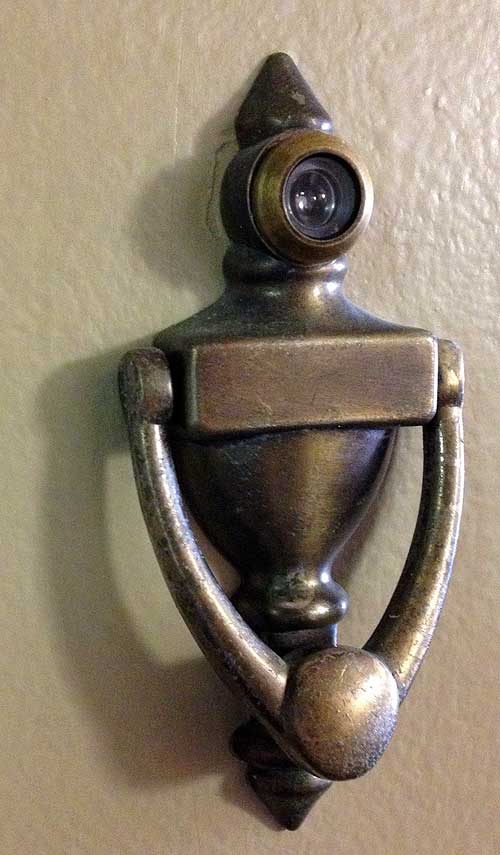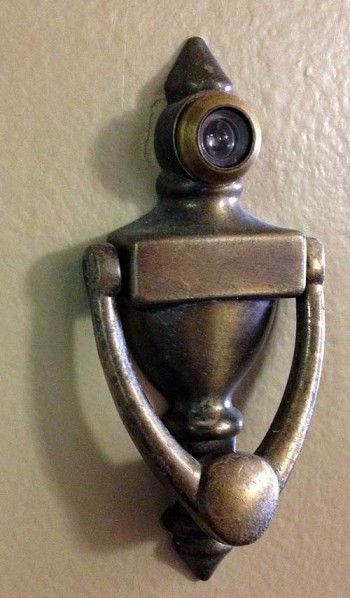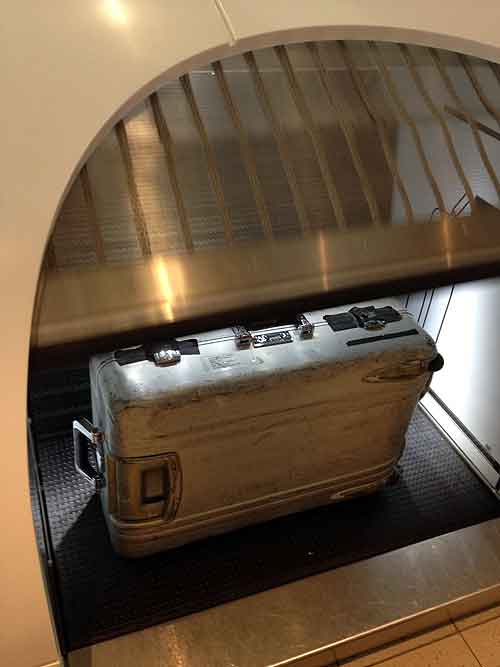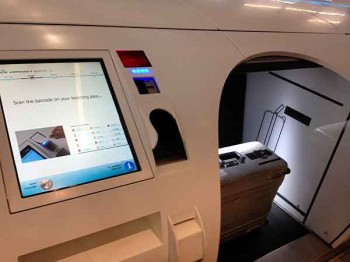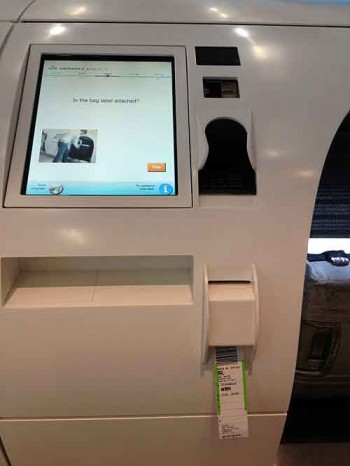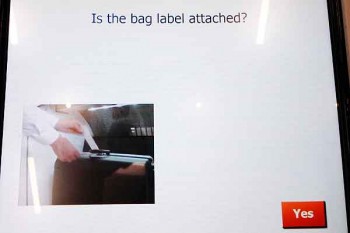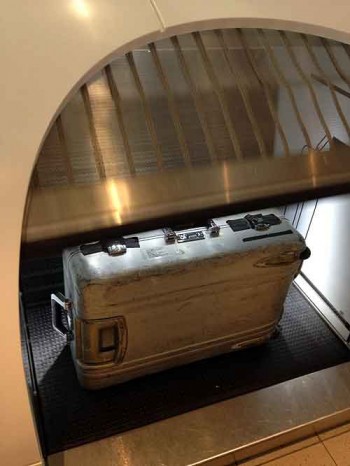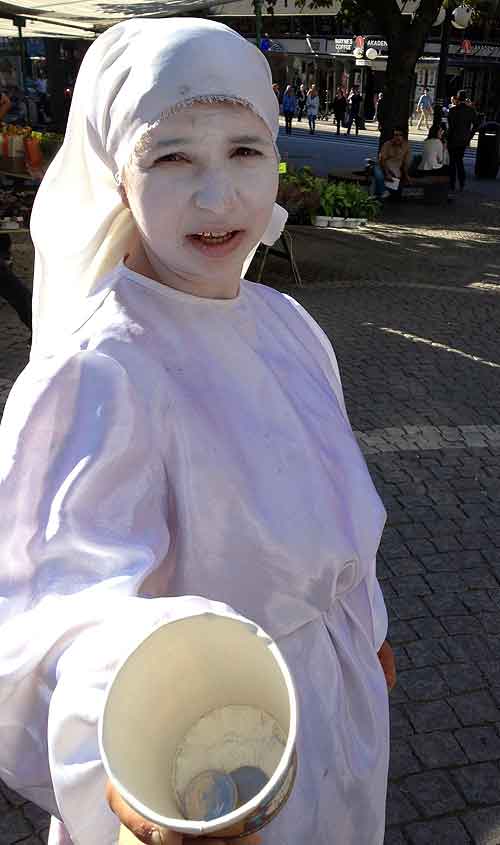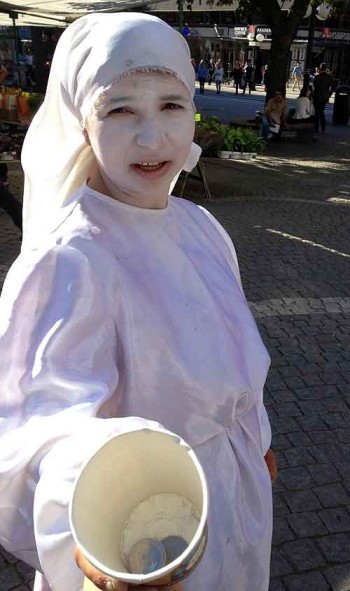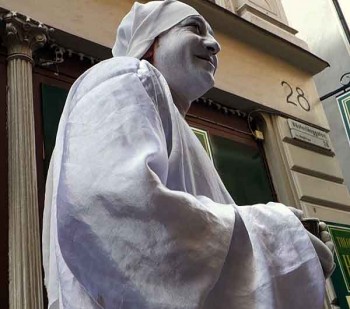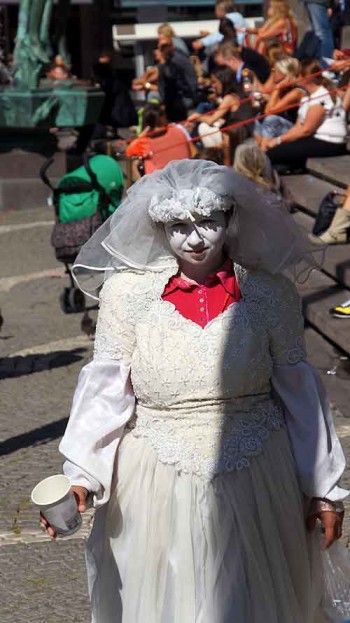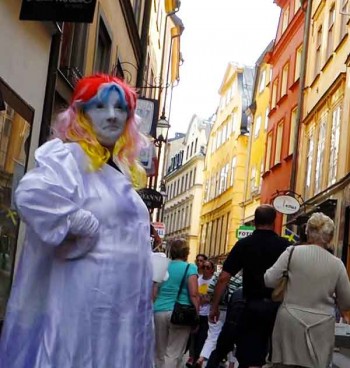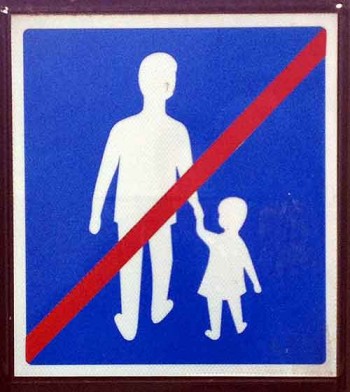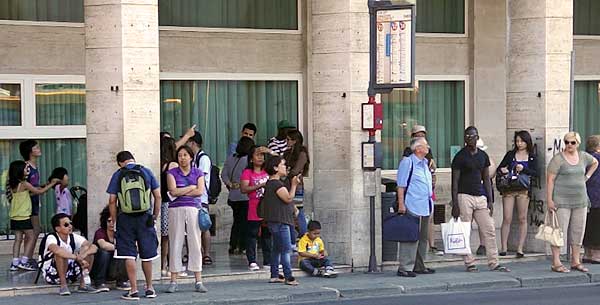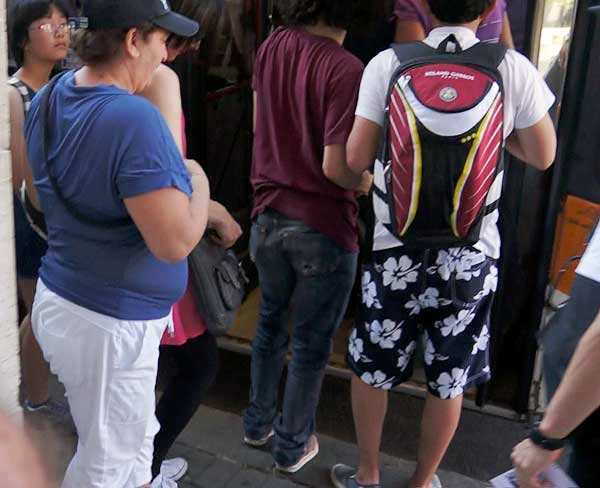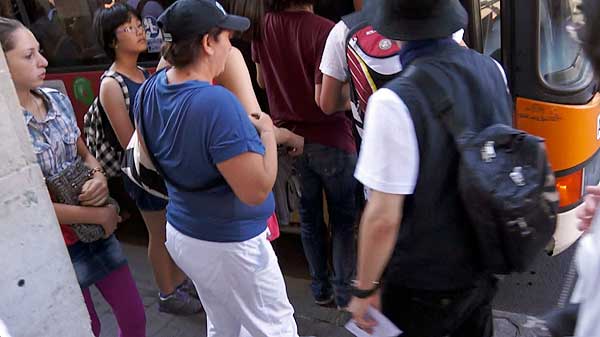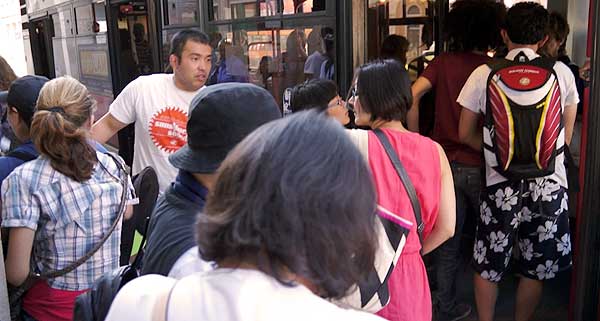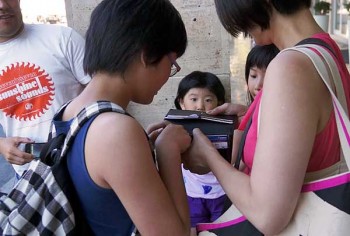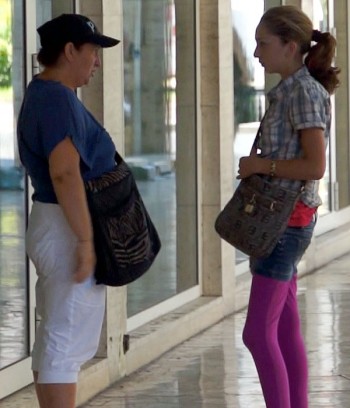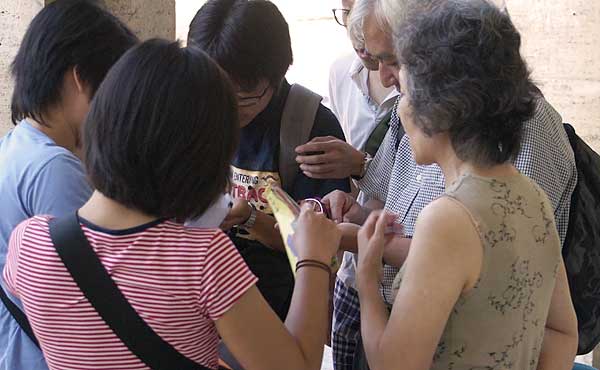The moments you’re boarding public transportation are your riskiest in the world of pickpocketry. A pickpocket in Athens shows us just how slick, and how fast, he can get your wallet.
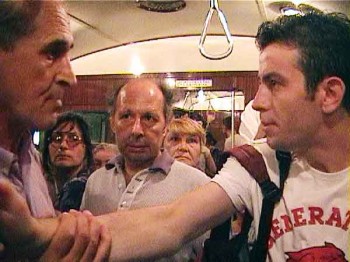
Here’s a pickpocket technique we saw but didn’t see. We were riding the green line in sweltering Athens. A woman in a yellow shirt and her male pal were already on the train when Bob and I boarded. They moved aside, making it easier for us to get on, then sandwiched Bob, separating me away. The male wore a t-shirt which proclaimed “generation (picture of a dog) free.” He pressed a flaccid shoulder-bag against Bob’s pants pocket while his partner tried to get Bob’s prop wallet.
“That was good,” Bob said to me in Swedish, our code-speak, because we assume few people understand it. “She tried but didn’t get it.” Probably because Bob’s pocket was pretty deep. We don’t want to make it too easy for them.
A pickpocket in Athens
Giving up, Dog Free hung his bag on his shoulder and inched away innocently, riding in sweaty silence. As the train approached Omonia station, he readied himself for another attempt.
A Greek gentleman boarded. Yellow and Dog Free, still on the train, blocked his way.

“Excuse me,” the Greek man said. “Let me get by.”
Yellow and Dog Free slid around behind him. Yellow flashed a flat parcel down low. Amid the confusion, I saw a hand briefly grip a pocket. In the swirl of people, I couldn’t identify whose hand it was, or even whose pocket. I was holding a camera low, blindly aiming at the known thief’s hands. Bob held his camera near the ceiling, pointing down.
The train hadn’t left yet. Dog Free pushed himself through the crowd with Yellow close behind. He stepped off the train, but the Greek was quick. He grabbed Dog Free’s wrist, pulling him back onto the train. Yellow walked.
“Come here!” the victim said in Greek.
“What do you want, mister?”
“You took my wallet!”
“What did I take?” Dog Free said. “You’re out of your mind. Search me! Look, look!”
The victim groped desperately in his empty pocket and released Dog Free. The thief left, the doors slammed shut, and the train departed.
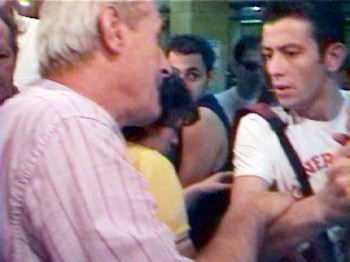
“Did he get your wallet?” we asked. “Portofoli?”
“Yes, he got it. I wasn’t sure if it was him or not, not a hundred percent.”
We asked the victim if he’d like us to go to the police with him, that we thought we might have the steal on film, and we certainly had the faces of the thieves. But no, he didn’t want to.
“He didn’t get a lot of money. I had only 20 euros.” (About $27.)
“What did he say?”
“He said he didn’t do it.” The Greek threw up his hands.
Sweaty and spent, we retreated to a shady streetside café in the Plaka to have a light lunch and review our footage. Over tzadziki and flat bread and cold fried eggplant, we unwound, cooled off, and rewound our cameras. Hunched over our tiny screens, we scrutinized the video.
Everything was there: Yellow, and Dog Free, the Greek victim boarding. You can’t take for granted that it will be, when shooting from the hip. And we make plenty of camera mistakes in moments of high tension or excitement. We pressed play on the other camera. Sipping retsina, we held our breath through shaky minutes of feet, unidentifiable body parts, then noisy confusion.

Pickpocket in Athens “kicks the poke”
And there it was, clear and close up. It took exactly a second and a half. Yellow positioned a flat parcel as a shield while Dog Free used both hands on the right front pants pocket of the Greek. His right hand pushed the wallet up from the outside of the fabric while his left reached only an inch into the pocket.
This is a technique dips call “kick the poke.” They raise it from the depths, or turn it into a better position for lifting. Dog Free neatly clipped the raised wallet between two fingers and let the Greek simply walk away from it. It happened so fast we didn’t see it—but our camera did.
What we can’t see, but most certainly happened, is Dog Free’s pass to Yellow. Dog Free pulled up his shirt and invited a search because he was clean: he’d given the wallet to Yellow, who escaped.
We call Dog Free’s special technique finesse. Thieves who use it have an edge, but they can be bested. They’re still opportunists. And we don’t have to give them the opportunity. We just need to be aware that they have tricks and techniques most of us wouldn’t dream of.
You think you’d feel it, but you could be wrong.
Excerpt from Travel Advisory: How to Avoid Thefts, Cons, and Street Scams
Chapter Five: Rip-offs: Introducing…The Opportunist












